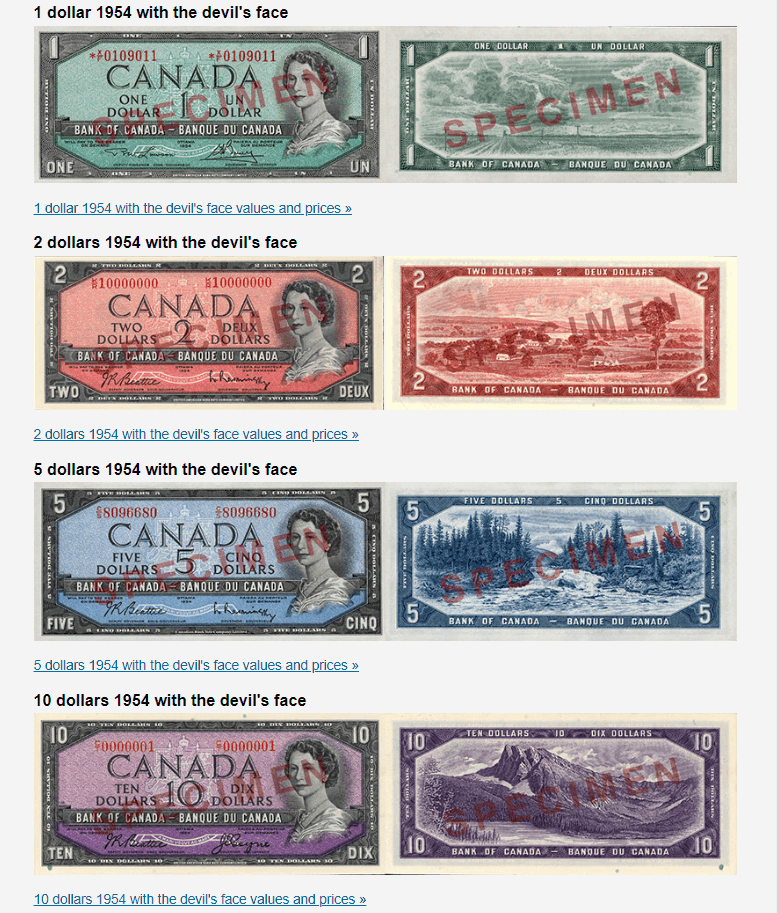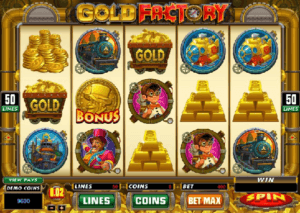
There’s an old advise to keep the old currencies and notes as they might be worth a lot of money some day. Well, the good news is that if you own an old $1 bills it can be worth a lot of money. Remember the bill should be of Devil’s face. In Canada, when the old $1 bills were discontinued in 1989, some people held onto them hoping they would be worth a lot of money some day. The time is not right to get the worth.
You should have the rare series of bills from 1954 called “Devil’s Face” notes. These bills were taken out of circulation because some people thought that the Queen’s hair looked sort of like a devil’s face.

Canadian banknotes of 1954 with the devil’s face series caused controversy because highlighted areas of the Queen’s hair gave the illusion of a grinning demon behind the ear. The term “Devil’s Head” is commonly used to describe these bank notes. The Bank of Canada had both bank note companies modify the face plates by darkening the highlights in the hair. These modifications were made in 1956 for all denominations. Note that two things affect the price of a bill, rarity and quality and if you’re lucky enough to have a bill that is both rare and high quality you could be looking at quite the payday.
In 1989, one dollar bills were discontinued altogether in Canada. Today, a classic dollar bill that is perfectly preserved could be worth up to $350.

According to coinsandcanada.com, the rarest $1 bills are the ones in perfect or near perfect condition. Bill can be categorized as: Good, Very Good, Fine, Very Fine, Extremely Fine, About Uncirculated and Uncirculated. The higher quality ones can be worth up to $350.
How bills are Graded?
According to Coins and Canada, Canadian dollar notes are graded according to the following benchmarks
Legend: The firmness of the bill (crispy / crunchy), of its fibers like Folds, ripples and counting marks.
The Brightness / color intensity and clarity of the design (drawings, landscapes, figures, reliefs, signatures, serial numbers, date). Also general cleanliness of the bill, including wear on corners and edges, dirt, tears, perforations (stapler, pin), bank or any company stamps, taping, writing mark)
- G (Good) means no firmness at all, Folds and major counting marks. Altered colors and details deleted. Sometimes blackened ticket. Major signs of circulation, dirt, tears and perforations or major stamp mark may be present.
- VG (Very Good) means Little or no firm. Folds and major counting marks. Pale colors and details often altered and deleted and Major signs of circulation, dirt, tears and perforations or major stamp mark may be present.
- F (Fine) means Used fiber with little firm with several folding marks and major and minor counting marks. Are less intense colors and signs of wear on the details and there are signs of wear on corners and edges.
- VF (Very Fine) means fibers slightly worn, maintaining a certain firmness. There are several folding marks and major and minor counting marks. Are less intense colors and signs of wear on the details and bear signs of wear on corners and edges, but still a clean bill.
- EF (Extremely Fine) where broken fibers are by a honest fold in the center, but intact elsewhere. Also a major fold in the center. Can also show up two or three counting marks with Bright colors and details present and without alteration.
- AU (About Uncirculated) notes are firm with a major ripple (no fold) OR slight counting marks.Come in Vivid colors and details present and are without alteration.
- UNC (UNCirculated) are firm, almost perfect. Can show three minor defects, 3 demerit points. The marks left by binding machines or marks left by ATMs are acceptable. Have bright colors and attractive bill to the eye. Less bright colors on older banknotes are acceptable.
- The bill can be offset with near intact corners and edges. Must not have been restored or pressed. Banknotes showing defects disturbing to the eye (like variations in the brightness of the colors, small tear, fold with broken fibers) should not receive the grade uncirculated (UNC).
- CUNC (Choice UNCirculated) are firm, almost perfect and can show a minor defect, 1 demerit point. Are of bright colors and attractive bill to the eye. Less bright colors on older banknotes are acceptable. The bill can be offset with near intact corners and edges. Must not have been restored or pressed.
- GUNC (Gem UNCirculated) are firm, almost perfect, the paper is fresh and bright. Bright colors, bright and attractive bill to the eye and are centered bill with intact corners and edges. Must not have been restored or pressed.
These bills are very rare but if you’re lucky enough to have one in perfect condition, it may be worth up to $7,000.
So if you have any old $1 bills lying around go check them and have their worth. Click here to know the value of these $1 notes right now.
You can also view the average prices of certified 1 dollar 1954 with the devil’s face sold at auctions or the list of values for special serial numbers and errors and varieties.
Remember that Devil’s face notes come in denominations of $1, $2, $5, $10, $20, $50, $100 and $1000.
Is there a deal here?
















